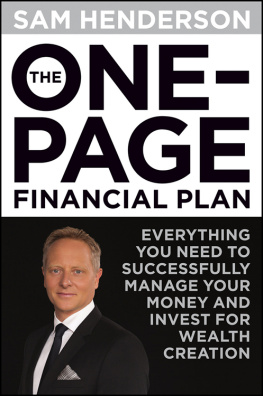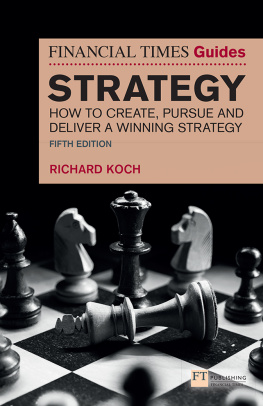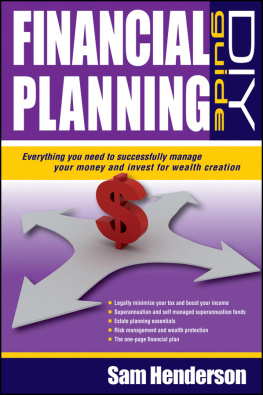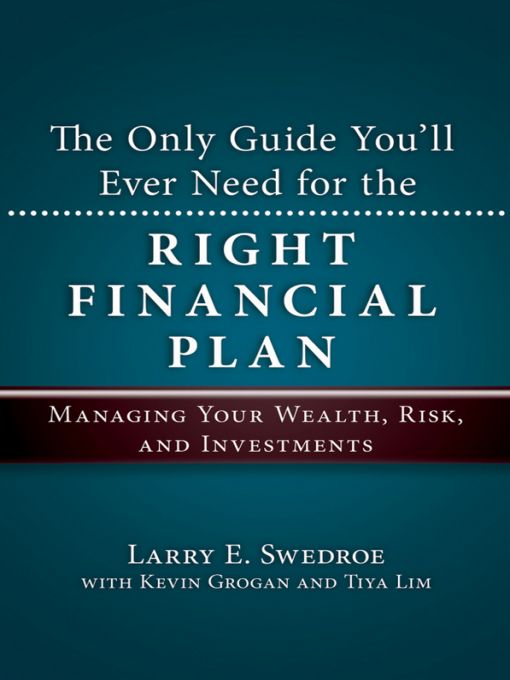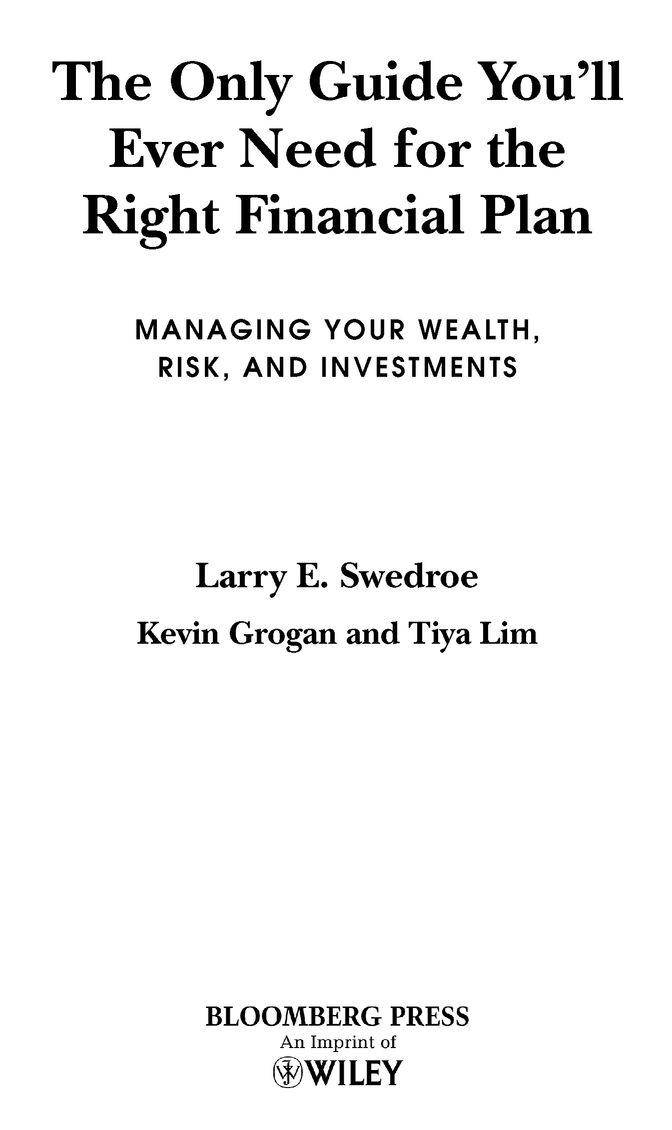Table of Contents
Additional Praise forThe Only Guide Youll Ever Need for the Right Financial Plan
Larry Swedroe has given us an experienced and research-based treatment with examples of what should enter into the design and implementation of an investment strategy. The book includes a wide range of alternative investments and savings related plans that should prove to be beneficial to individuals and to their financial advisors.
John A. Haslem, Professor Emeritus of Finance,
Robert H. Smith School of Business,
University of Maryland
Mutual funds researcher and
author of Mutual Funds
The Only Guide Youll Ever Need for the Right Financial Plan may be the best collection of advice on key issues such as when to begin Social Security benefits and how to tax efficiently manage your money during your accumulation and withdrawal phases of life.
Dr. William Reichenstein, CFA,
Pat and Thomas R. Powers Chair in Investment Management,
Hankamer School of Business, Baylor University
As Larry makes abundantly clear, wise investing is wise only in the context of ones own unique personal financial situation. If you are an investor who has not considered how your investments fit into your life, you need this book.
Edward R. Wolfe, Ph.D., Professor of Finance, Western Kentucky University
Larry Swedroe has hit yet another home run with his ninth and newest book.
W. Scott Simon, J.D., CFP,
AIFA, Author, The Prudent Investor Act:
A Guide to Understanding,
Columnist, Morningstars Fiduciary Focus
This book is dedicated to the employees of the Buckingham Family of Financial Services and the advisers at the more than one hundred independent, fee-only registered investment adviser (RIA) firms with which we at Buckingham have strategic alliances. Each and every one of them works diligently to educate investors on how markets really work, building long-term relationships by doing the right thing.
Preface
Each of the prior eight books I have written reflects what I have learned in my almost forty years of managing financial risks for major corporations and advising individuals, institutions, and corporations on the management of financial risks.
Included among my books is the trilogy of Only Guides. The first focuses on equities, the second on bonds, and the third on alternative investments. Each presents what one might call the science of investing: evidence based on peer-reviewed academic studies. The Only Guides explore the best investment vehicles to use, the risks and rewards of major asset classes, specific types of investments, and the benefits of a globally diversified portfolio. The books even present model portfolios, but these are meant as starting points only. Each investor has a unique ability, willingness, and need to take risk.
What investors need today is a book offering more specific investment advice, one focusing on the art of investing and guiding investors to adapt a winning investment strategy to their own situation. That is what this book is all about.
This Only Guide addresses a wide range of investment issues. For example, who should consider owning more small-cap stocks, value stocks, and emerging market stocks, and who should consider owning less of them? It also addresses the often-overlooked subjects of asset location (as opposed to allocation), withdrawal strategies in retirement, and when and how to take Social Security benefits. Most importantly, it will help you integrate other financial issues into an overall financial plan. Having a well-thought-out investment plan is a necessary condition for success, not a sufficient one. The sufficient condition is integrating the investment plan into a well-thought-out estate, tax, and risk management plan. As we demonstrate in Part IV, even the best investment plans can fail if these other issues are not adequately addressed.
The goal of this book is to help both investors and professional advisers make better, more informed decisions in order to practice the winning investment strategy. Thus, the book is designed to help you understand the fundamental concepts of asset allocation, asset location, and other investing and general financial planning concepts. After reading this book, you will have learned how to:
design an investment policy statement (IPS) and asset allocation plan, one most appropriate to your unique situation
locate assets in the most tax-efficient manner
maintain the portfolios risk profile in the most efficient manner
provide effective tax management
integrate risk management and estate planning issues into the plan
While written to be accessible, this is not a dummies book. The assumption is that you know some basics about stocks and bonds.
How to Use this Book
This book can be used in two ways: read cover to cover or searched for topics of interest, providing quick access to information to answer specific questions that may arise and as circumstances change. Thus, it can serve as a reference manual. Most topics are broad based. You will find a brief discussion of a subject and perhaps a reference to an appendix or one of my other books containing a more detailed discussion of the subject.
Because investing is more art than science, this guide is not meant to provide hard-and-fast rules. While a physicist can measure the speed of light to the fourth decimal place with minimal estimation error, even the most fervent finance professor knows that such precision is impossible in investment theory. Investors and advisers alike must accept that they will never know,
ex-ante, the optimal allocation to international investments or how much an investors portfolio should tilt toward value stocks or small-cap stocks. In most cases, all they can be sure of is that they are in the ballpark. This book is a tool to help you make prudent decisions, remembering prudence is determined not by the outcome, but by the process. Therefore, this book:
raises questions leading you to the best answer given a particular situation
helps identify issues that should be considered
gives direction so you can best use your own judgment and apply it to each unique situation
As a final resource, the book contains an extensive glossary of terms.
LARRY SWEDROE
Acknowledgments
Books are seldom the work of one person, or in this case three people. Ours represents the collective wisdom of the investment professionals at the Buckingham Family of Financial Services.
For all their support and encouragement we would like to thank the principals of our firm: Adam Birenbaum, Ernest Clark, Susan Shackelford-Davis, Steve Funk, Bob Gellman, Ed Goldberg, Ken Katzif, Mont Levy, Steve Lourie, Vladimir Masek, Bert Schweizer III, Brenda Witt, and Stuart Zimmerman.
Too many of our co-workers contributed to list them all. But we would be remiss if we did not mention the special efforts and contributions of RC Balaban, Jim Cornfield, David Ressner, John Corn (who made major contributions to the sections on retirement plans and college savings plans) and Aaron Vickar (who made major contributions to the chapter on insurance). Jared Kizer, the coauthor of The Only Guide to Alternative Investments Youll Ever Need


